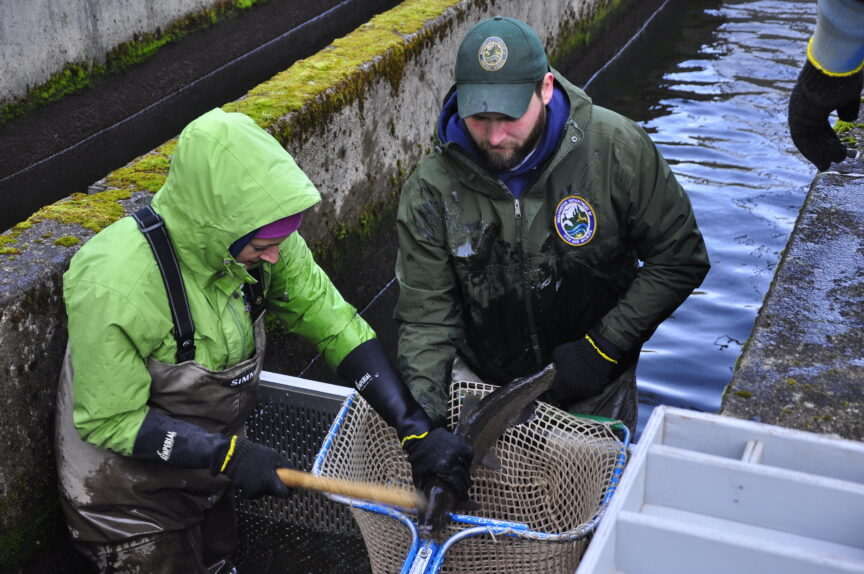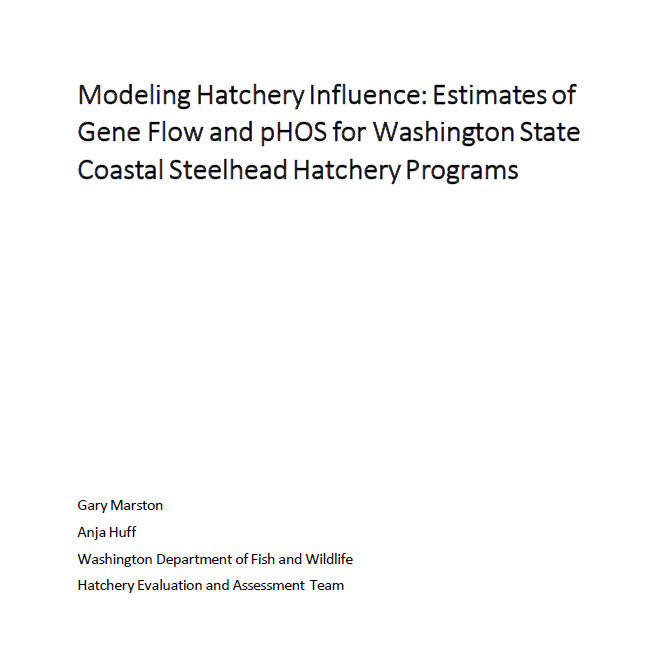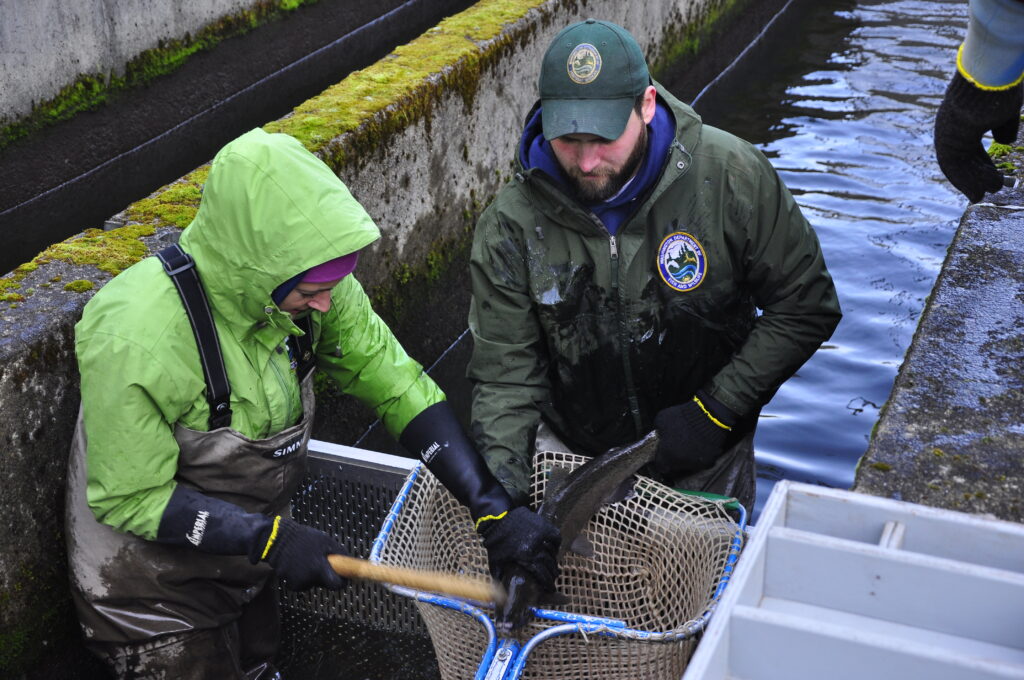
Our Science Advisor provides further insights into the impacts of hatchery steelhead management on Washington Coastal systems
Washington’s coastal steelhead fisheries are world renowned, but years of low wild returns, fisheries closures, and a pending ESA petition have put the spotlight on the Washington Department of Fish and Wildlife’s (WDFW) management of these iconic fisheries. Hatchery production is a key component of WDFW fisheries management on the Washington coast, but until recently the impacts of hatchery releases on wild populations were largely unknown.
In August 2022, the agency released a White Paper detailing the current genetic impacts of coastal steelhead hatchery releases on wild populations. The paper was based on modeling that Anja Huff, a WDFW Biologist, and I conducted before I took my current role here with Wild Steelheaders United and Trout Unlimited. Our evaluation found that these programs are failing to meet the standards established by WDFW’s Statewide Steelhead Management Plan. I wrote about the findings, implications, and critical data gaps in an October post, which can be read here.
In this follow-up post, I take a closer look at some of the key questions addressed by our review of the WDFW’s coastal steelhead hatchery programs.
How many hatchery programs does WDFW operate on the Washington coast?
At the onset of this project, WDFW operated fourteen hatchery programs on the Washington coast, with an additional program (Wishkah early-winter steelhead) being added in 2020. Since the completion of the project two hatchery programs have been discontinued (Bogachiel/Calawah wild broodstock program and North River outplant). Thirteen WDFW programs remain. In addition to the program operated by WDFW, there are a number of tribal and federally run hatchery programs on the coast. These were not evaluated as a part of this project.
What types of steelhead hatchery programs are operated on the coast?
All hatchery steelhead released on the Washington coast are intended for harvest argumentation. These programs fall into two categories: Integrated (often referred to as “broodstock” programs) and segregated.
The goal of integrated hatchery programs is to manage the hatchery and wild fish as a single population, with the wild component driving adaptation in the basin. This is done by bringing wild fish into the hatchery to be spawned in the broodstock while also maintaining a relatively low level of hatchery fish on the spawning grounds (< 30%). In some integrated programs only wild fish are used in the broodstock while others use a mixture of hatchery and wild fish.
The goal of segregated hatchery programs is to maintain hatchery and wild fish as separate populations. In these programs only returning, adult hatchery fish are used for broodstock, resulting in highly domesticated broodstock such as the Chambers Creek (early winter) or Skamania (early summer) broodstocks which are used on the Washington coast. To function properly, the level of hatchery fish on the spawning grounds should be maintained at extremely low levels to prevent deleterious impacts that occur when wild fish spawn with the domesticated hatchery populations. This is done by selection in the hatchery broodstock resulting a different spawn timing between wild and hatchery fish.
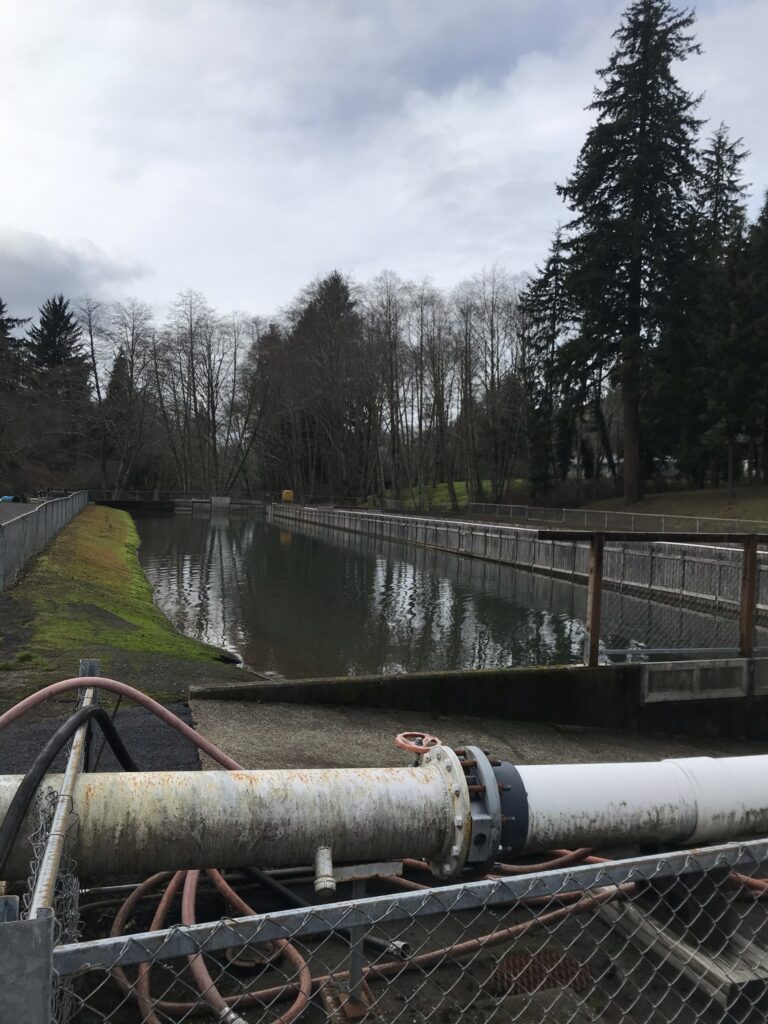
Above: The Naselle River hatchery in Willapa Bay.
What are the risks of hatchery programs?
This certainly is not an exhaustive list, but hatchery steelhead pose ecological and genetic risks to wild populations due to competition for available food, increased predation, disease, and a loss of local adaptation due to interbreeding with hatchery fish that are exposed to domestication effects and artificial selection in the hatchery.
Artificial selection and domestication effects occur rapidly in hatcheries, starting with selection during spawning and continuing through the life cycle. Often the fish that are best adapted to the wild are poorly suited to a hatchery environment and die early in the rearing cycle.
Another concern with hatchery fish is the simplification of life history diversity. Wild smolts range from age-1 to age-7, while hatcheries almost exclusively rear and release fast growing age-1 smolts. In order for juveniles to reach a sufficient size by age-1, hatchery managers generally favor early spawning adult fish, as juveniles of later spawning fish are unlikely to reach a sufficient size prior to an age-1 smolt release target.
Fast growth is again emphasized throughout the hatchery rearing process, with juvenile steelhead being fed a simplified diet that is high in fat and often leads to a significant amount of the males maturing as precocious parr instead of smolt by the time of releases. Additionally, the fish are typically reared at high densities in concrete raceways, which results in more frequent disease outbreaks, increased aggression in the juvenile hatchery steelhead and a general lack of exposure to complex habitat essential to survival in the wild. Further, due to the higher survival in of eggs and juveniles in hatcheries, a smaller number of adults are used to produce a large number of juveniles, resulting in these selected traits being amplified when hatchery fish spawn in the wild and resulting in a loss of genetic diversity.
What is the Statewide Steelhead Management Plan?
Washington’s Statewide Steelhead Management Plan (SSMP) was established in 2008 and is intended to guide steelhead management across state watersheds. The plan covers a wide variety of management topics, including fisheries, hatcheries, and habitat. However, despite the plan being fourteen years old, many key components have not been implemented on the Washington coast, including a number of the hatchery provisions intended to reduce impacts on wild steelhead populations.
How does the SSMP account for the impacts of hatchery Steelhead on wild populations?
To account for the genetic impacts of hatchery fish spawning in the wild, the 2008 Statewide Steelhead Management Plan set acceptable risk thresholds for both integrated and segregated hatchery programs. For integrated programs the thresholds are to maintain less than 30% hatchery origin spawners in the wild (pHOS) and that the Proportionate Natural Influence (PNI), which is a balance pHOS and the proportion of wild fish used in the broodstock, must be 0.70 or higher. For segregated programs the SSMP set a genetic threshold of 2% geneflow into the wild population. Our project was the first evaluation of how well current hatchery programs align with the SSMP’s thresholds on the Washington coast.
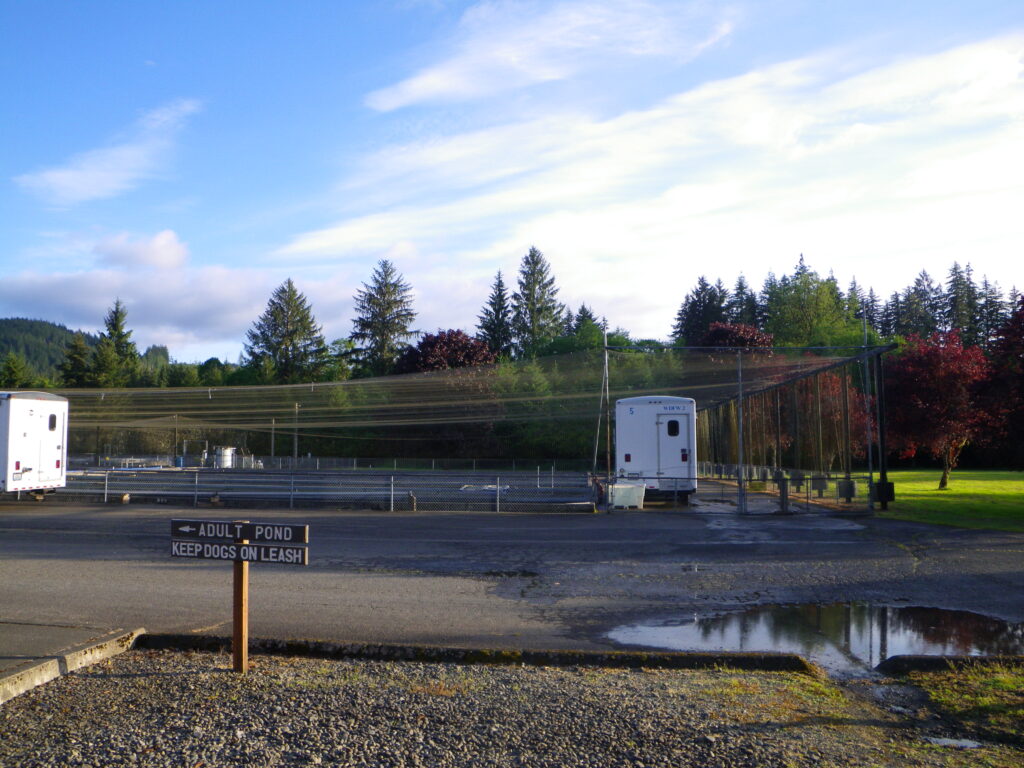
What about ecological impacts of hatcheries?
The SSMP also recognizes the risk of ecological impacts from hatchery steelhead, but unlike genetic impacts, does not set thresholds for an acceptable level of risk from ecological impacts. Ecological impacts were outside the scope of our project but as they are undoubtably occurring and impacting wild populations, they are something that the agency should prioritize assessing the future. The tools, such as the Predation, Competition and Disease Risk (PCD Risk) model exist to do this, but WDFW needs to prioritize funding and staff time to tackle it.
How were hatchery impacts assessed through this project?
Actual on-the-ground data for genetic hatchery impacts of Washington coastal hatchery Steelhead programs does not currently exist. As such, we used a modeling approach to evaluate these impacts. To do this we used two models, the Demographic Geneflow Model (DGM) and the All-H Analyzer (AHA) Model.
What is the Demographic Geneflow Model and how does it work?
The Demographic Geneflow Model is based on the geneflow equation presented in the SSMP and was developed in 2014 to evaluate segregated steelhead programs in Puget Sound. This model uses known spawn timing distributions of hatchery and wild populations based on in hatchery spawning and spawning ground surveys in each watershed to assess the actual overlap in spawning to estimate geneflow.
What is the AHA Model and how does it work?
The AHA model was used to evaluate the impacts of the integrated hatchery programs on the Washington Coast. This model was developed by the Hatchery Scientific Review Group and has been used across the West Coast as a tool for assessing hatchery impacts. The AHA model uses habitat productivity and capacity metrics, fisheries impacts, and hatchery information (such as fecundity, survival rates, number of wild fish in the broodstock, etc.) to project pHOS and PNI for hatchery programs.
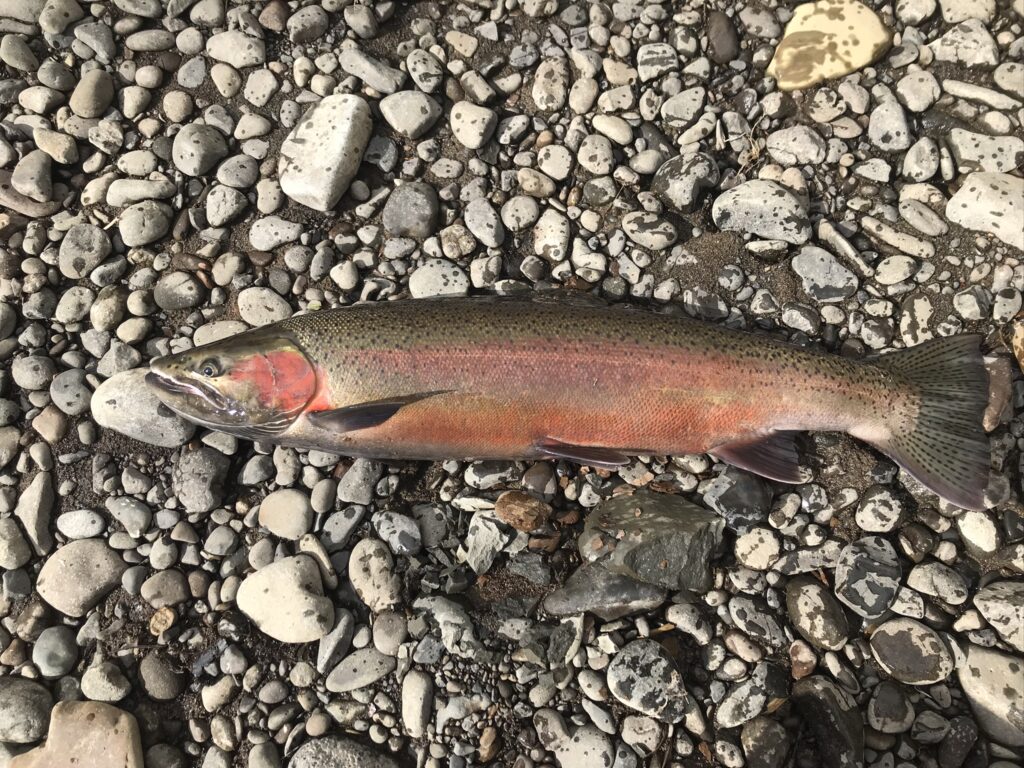
What are the limitations of models?
First off, a couple of classic modeling quotes certainly apply here: “All models are wrong, but some are useful,” and “garbage in = garbage out.” Basically, models are only as good as the data informing them. As such, whenever running a complex model, it is important to understand where data quality is lacking and how much of an impact on the model results each piece of data informing it has. To get at the effects of uncertainly, we used a sensitivity analysis to evaluate the key areas of uncertainty for the models were, with the following being the most important:
- The March 15 spawner cut-off date
Currently, an arbitrary March 15 cut-off date is used by WDFW to determine hatchery and wild spawners. This adds uncertainty into both models, although the geneflow model has built-in correction factors to account for fish spawning prior to March 15. The March 15 cut-off is particularly problematic for integrated programs (AHA model) where we know the hatchery fish spawn at the same general time as wild fish. This results in a number of hatchery fish being counted as wild in WDFW’s escapement estimates, thus biasing the actual abundance of wild fish used in the model, meaning that the results are likely underestimating the actual level of hatchery impacts.
- Homing rates to hatchery traps (also called “trapping efficiency”)
This input has a significant impact on model results and there is also significant uncertainty around how well hatchery fish return to trapping sites. In most cases the models use an assumption that 70% to 80% of hatchery fish that escape fisheries will home back to the hatcheries. In some cases, where there is poor attraction back to the hatchery, or there are no or limited trapping facilities, the models use best estimates based on observations. However, actual data is needed to verify homing rates, as well as stray rates to other watersheds, which are currently unknown and as such could not be incorporated into our analysis.
- Spatial and temporal overlap
The final two critical assumptions covered here are that hatchery fish spawn in the same areas as wild fish and that hatchery fish spawn at the same time in the wild as they do in the hatchery. If hatchery fish are not spawning in the same areas as wild fish, then the models may be overestimating the genetic impacts. The AHA model assumes that hatchery and wild fish spawn at the same time while the geneflow model assumes separation. In the geneflow model, the difference between hatchery fish spawn timing in the hatchery and wild is unclear. However, there is evidence that male hatchery fish will wait on the spawning grounds for wild fish to arrive, which is not incorporated into the geneflow model, and would result in an underestimate of genetic impacts.
While we attempted to account for the uncertainty described above, it is quite possible that these factors could result in the models underestimating the level of hatchery impacts on wild steelhead populations. As such, actual geneflow or pHOS data should be collected to better understand the validity of the model results. Geneflow is currently being monitored in Puget Sound via genetic sampling, something that could reasonably be expanded to the coast region. Directly monitoring pHOS is much more challenging but could be accomplished through tagging studies in select watersheds to validate the modeling.
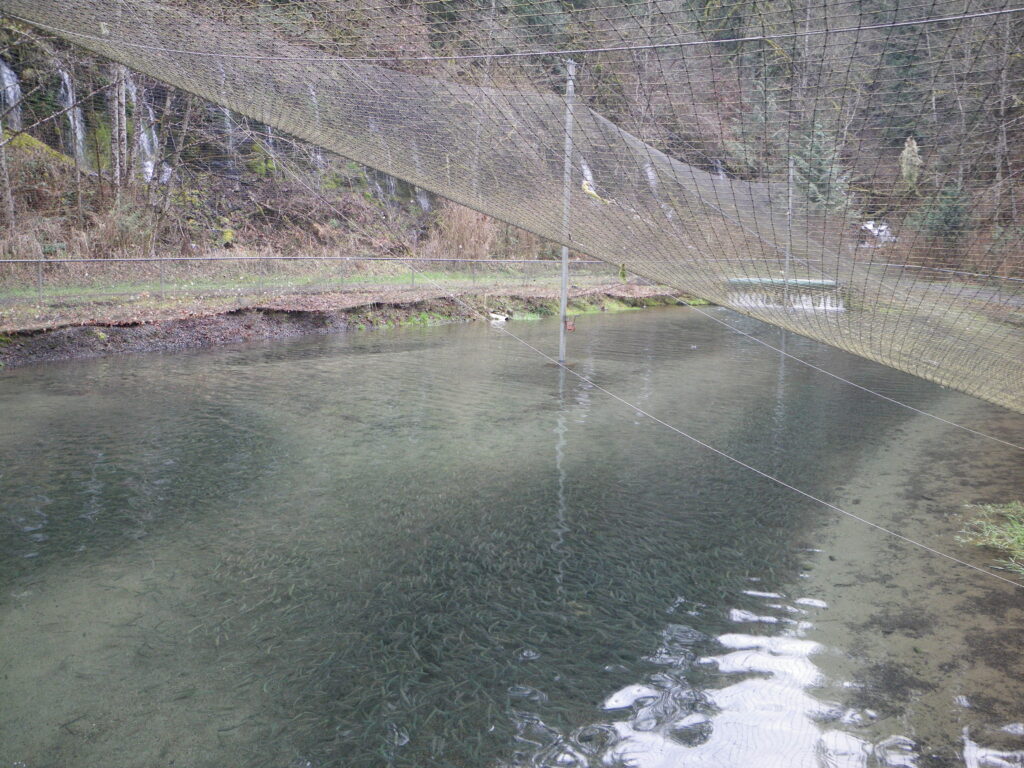
What did the paper tell us about hatchery steelhead impacts on the Washington coast?
Broadly speaking, our paper indicated that most hatchery programs on the Washington coast are exceeding the genetic thresholds set out in the SSMP. (Remember, the SSMP does not set thresholds for ecological impacts.) In most cases, bringing the programs within compliance would only require small reductions in release levels or slight shifts hatchery practices. However, in two watersheds, the Wynoochee River (currently 36.37% pHOS and 0.45 PNI for late winter Steelhead and 9.12% geneflow for early-summer steelhead), and Naselle River (currently 3.38% gene flow for early winter steelhead) hatchery programs greatly exceeded the thresholds in the SSMP.
Hatchery releases in these two watersheds have particularly high impacts primarily due to poor hatchery practices or facility limitations. This leads to an unacceptable amount of hatchery fish straying to the spawning grounds adults return. Steelhead for Wynoochee programs are reared out-of-basin and outplanted at five locations in the Wynoochee River, without acclimation and with trapping facilities only present at the Wynoochee Dam. In the Naselle River, there is very little attraction flow at the hatchery, which has resulted in a large number of returning hatchery fish passing the facility.
Based on the results, the paper suggests that hatchery programs on the coast would need to be reduced by 262,000 smolts to meet the SSMP guidelines. However, instead of just relying on reductions the paper recommends that the agency focus on improving acclimation and trapping of hatchery fish as much as possible, thus reducing the number of hatchery fish that make it to the spawning grounds.
How do closed fisheries affect hatchery impacts?
The current approach for hatchery releases employed by WDFW on the Washington coast revolves around the assumption that fisheries will occur each season and will be enough to reduce the abundance of hatchery fish on the spawning grounds to keep them within acceptable levels.
However, during periods of low returns of wild steelhead, when there is a high amount of uncertainty around whether fisheries will occur or not, this approach breaks down. In these seasons, across-the-board hatchery impacts exceeded the SSMP thresholds because too many hatchery fish survive to reach the spawning grounds. For segregated programs impacts are typically not as extreme as limited fisheries may still be possible even in low wild abundance years. This is because the earlier timed hatchery fish arrive before the bulk of wild fish.
However, for integrated programs, closed fisheries can result in significant hatchery impacts. This has the potential to outweigh the conservation benefit of the fisheries closures because too many hatchery fish will reach the spawning grounds. For example, the Wynoochee River is projected to have a nearly 70% pHOS in recent years due to the closures of fisheries targeting hatchery returns (we’ll be covering more on this specific program in an upcoming post). In short, uncertainty around wild returns, especially when they are at low abundance, leads to the need for conservative fisheries management and proactive actions associated with hatchery practices to minimize risks.
Did this paper assess any “broodstock” programs?
One criticism that Washington often receives is that it should implement the Oregon “broodstock” program model. These “broodstock” hatcheries are simply integrated programs, most often utilizing all wild fish for spawning in the hatchery. These fish are often caught by anglers and delivered to hatchery programs.
This paper evaluated six integrated “broodstock” programs along the Washington coast, which incorporated various levels of wild fish for spawning. While these programs are popular for the often-larger fish that they produce, they also present challenges for management as the hatchery fish return and spawn at the same time as wild fish and thus put their fisheries right on top of wild runs. This means that there are high impacts to co-occurring wild fish during hatchery targeted fisheries, requiring increased monitoring and often closures during low wild returns. One of the key research recommendations from this paper is for WDFW to embark on a formal study to evaluate the risks and benefits of integrated and segregated hatchery programs to determine where two strategies are most effective.
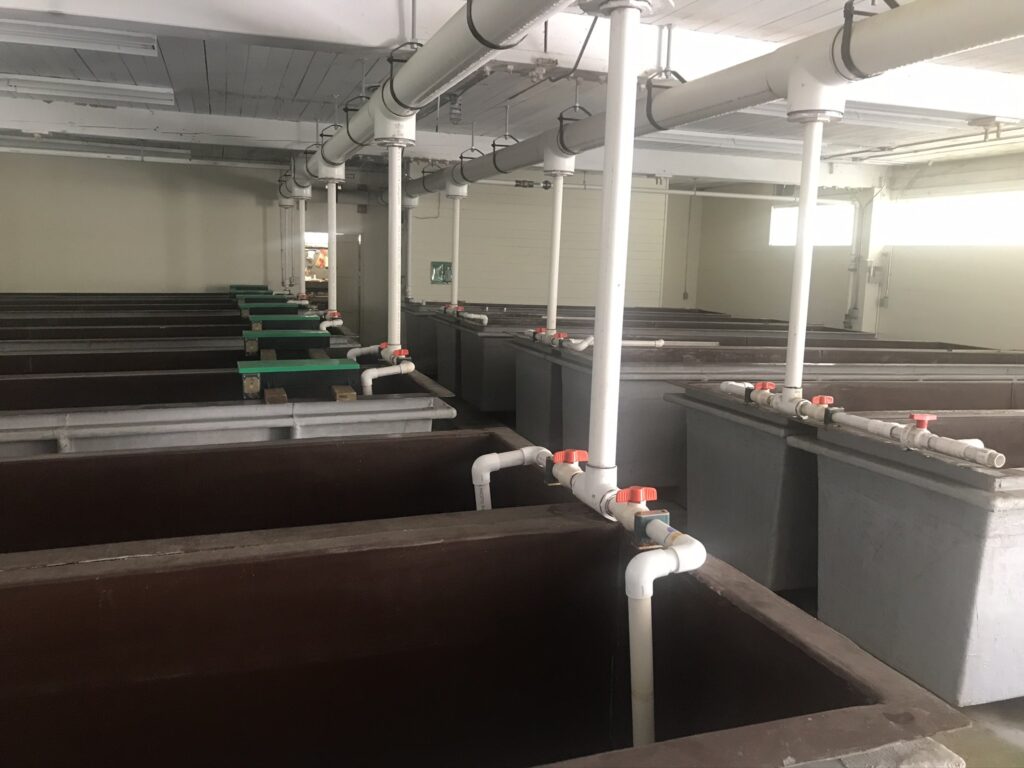
Was there a program evaluated that fit the “Oregon broodstock program” model?
Of the programs we evaluated, the Bogachiel/Calawah program was nearly identical to the Oregon “broodstock” program model. The broodstock for this program was comprised of 100% wild fish collected from the early component of the run by local guides, with the sole goal of augmenting harvest. The program lacked trapping or acclimating facilities and the available data suggested relatively poor smolt to adult returns. Based on the modeling, this program was projected to provide far fewer fish to anglers prior to reaching the genetic thresholds in the SSMP than the segregated programs in the watershed. For example, operating a 30,000 smolt release “broodstock” program would have resulted in a 30% overall reduction in plants in the Bogachiel and Calawah rivers. Due to the lower bang for the buck and a high potential risk to wild populations, local anglers and guides agreed with WDFW to prioritize the segregated programs and discontinued the broodstock program in 2021.
What is “hatchery reform” and how are these principles incorporated into the paper’s recommendations?
Hatchery reform is a term used to describe the broad process through which hatchery practices are improved to maximize fisheries benefits while reducing the risks to wild populations.
A misconception about hatchery reform is that it only refers to cutting hatchery production. This is not true. While production cuts are sometimes necessary, reducing releases is just one tool in the toolbox that can be used to reduce impacts. A significant part of this paper was to provide recommendations for actions that could improve hatchery practices, while reducing impacts to wild populations.
What are some specific hatchery reform recommendations from the paper?
For example, in the Chehalis watershed, low Proportionate Natural Influence (PNI), which is a measure of the number of wild fish in the broodstock and hatchery fish on the spawning ground (pHOS), is a major limiting factor. Of these two variables, low integration rates of wild fish into the hatchery broodstocks is a bigger factor in the low PNI and as such we recommended focusing on increasing the number of wild fish in the broodstock (while not overmining wild populations) to increase PNI.
In the Wynoochee River 230,000 (summer and winter combined) hatchery steelhead are currently being released. However, the model suggests that the programs, as currently operated, can only release 55,000 smolts. The programs have high hatchery impacts primarily due to poor hatchery practices associated with trapping and acclimation. As such, instead of just looking at reductions, we evaluated improving acclimating and trapping efficiency by eliminating out-planting and instead rearing fish in net pens in Wynoochee Reservoir prior to release to improve homing back to trapping sites. If implemented these actions projected to allow WDFW to release 215,000 (summer and winter combined) smolts, only requiring a 15,000 smolt reduction.
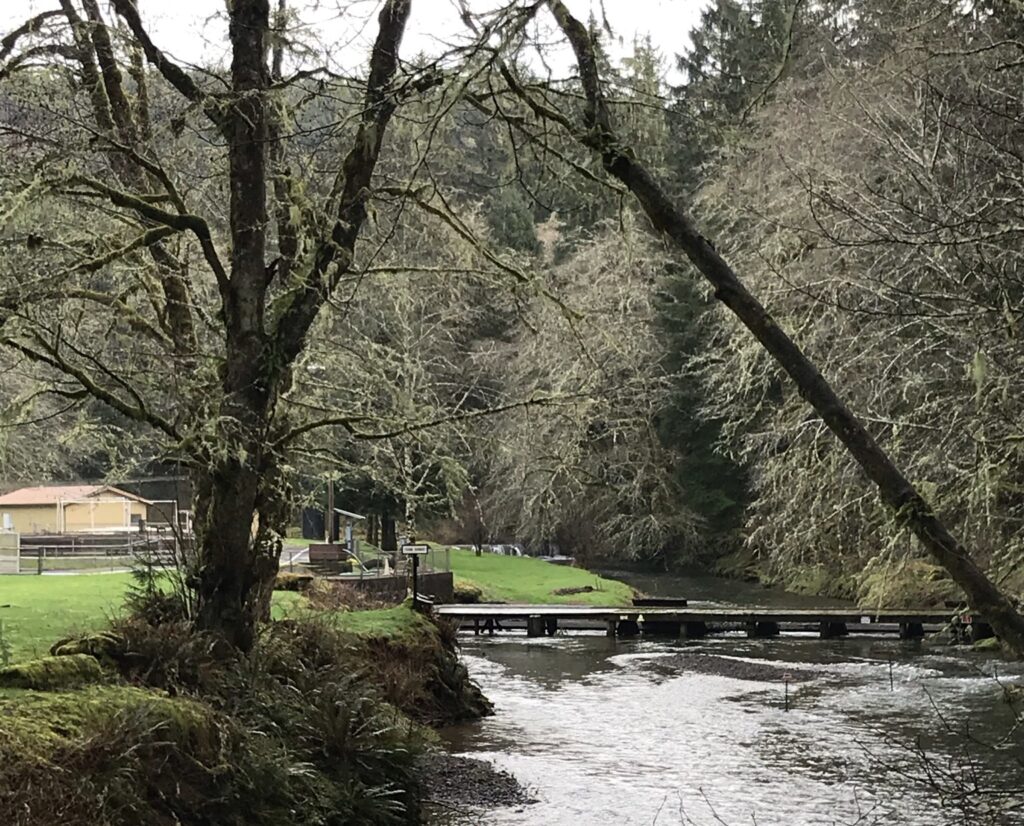
Is there a primary recommendation for WDFW coastal steelhead hatchery programs suggested in the paper?
One thing that is lacking for steelhead hatchery programs on the Washington coast is clear performance goals to ensure the expected return on investment is being achieved without impeding the recovery of struggling wild fish populations
Currently, hatcheries are managed based on the number of juvenile fish released. These goals are intended to translate into a number of returning adult fish. The current practice of static juvenile release goals assumes that wild returns are also going to be static. As we know, with variable environmental conditions, predation and fisheries impacts from year to year, this is not the case.
Instead of simply flooding systems with smolts, hatchery release levels of juvenile fish should be set on a sliding scale based on expected returns of both hatchery and wild adults. This sliding scale approach is currently challenging due to the time between releasing hatchery juveniles and adult returns and the high degree of uncertainly in long-term forecasting. However, managing hatchery releases on a sliding scale would allow the state to manage the impacts of hatchery fish on wild populations far more effectively.
Another misconception about hatcheries is that releasing more juveniles automatically means more adults back. This is not always the case as density dependent factors, such as competition or predation often result in lower survival for larger release groups and a reduced return on investment. While there are thresholds for genetic impacts, there should also be clear goals for expected post-release survival rates and numbers of adult hatchery steelhead caught in fisheries. Hatcheries that are under performing (i.e. poor survival or contribution to fisheries) should be evaluated to determine whether hatchery practices can improve performance or if releases of hatchery fish should be discontinued or prioritized in other watersheds.
What are the most important next steps recommended for the state’s steelhead hatchery programs on the coast?
While the paper describes a number of important next steps for assessing hatchery impacts on the coast, a few jump to the forefront. First is the need to start gauging actual hatchery impacts to verify the results of the models. The methods exist to do this, but WDFW needs to prioritize the funds and staff to do so. We simply need more accurate data.
Next, since no wild summer steelhead abundance data was available for coastal watersheds, all impacts assessed are based on winter steelhead populations. This is a glaring omission since these programs undoubtably impact wild summer steelhead, too. As such, WDFW needs to prioritize assessing wild summer steelhead abundance and distribution to be able to consider hatchery impacts on the smaller and more sensitize summer-run populations.
The hatchery white paper provides a first step in understanding hatchery impacts on the Washington coast, but there is still a long way to go. There are many uncertainties with the models that require actual data to validate genetic impacts to wild summer run steelhead and the ecological impacts of hatchery releases still have not been assessed. It is heartening to see that the recently completed Coastal Steelhead Proviso Implementation Plan carries many of the recommendations and concepts provided in the white paper forward, but there is still a lot of work to be done to consider how hatchery impacts will factor into rebuilding wild runs to more abundant and sustainable levels.


